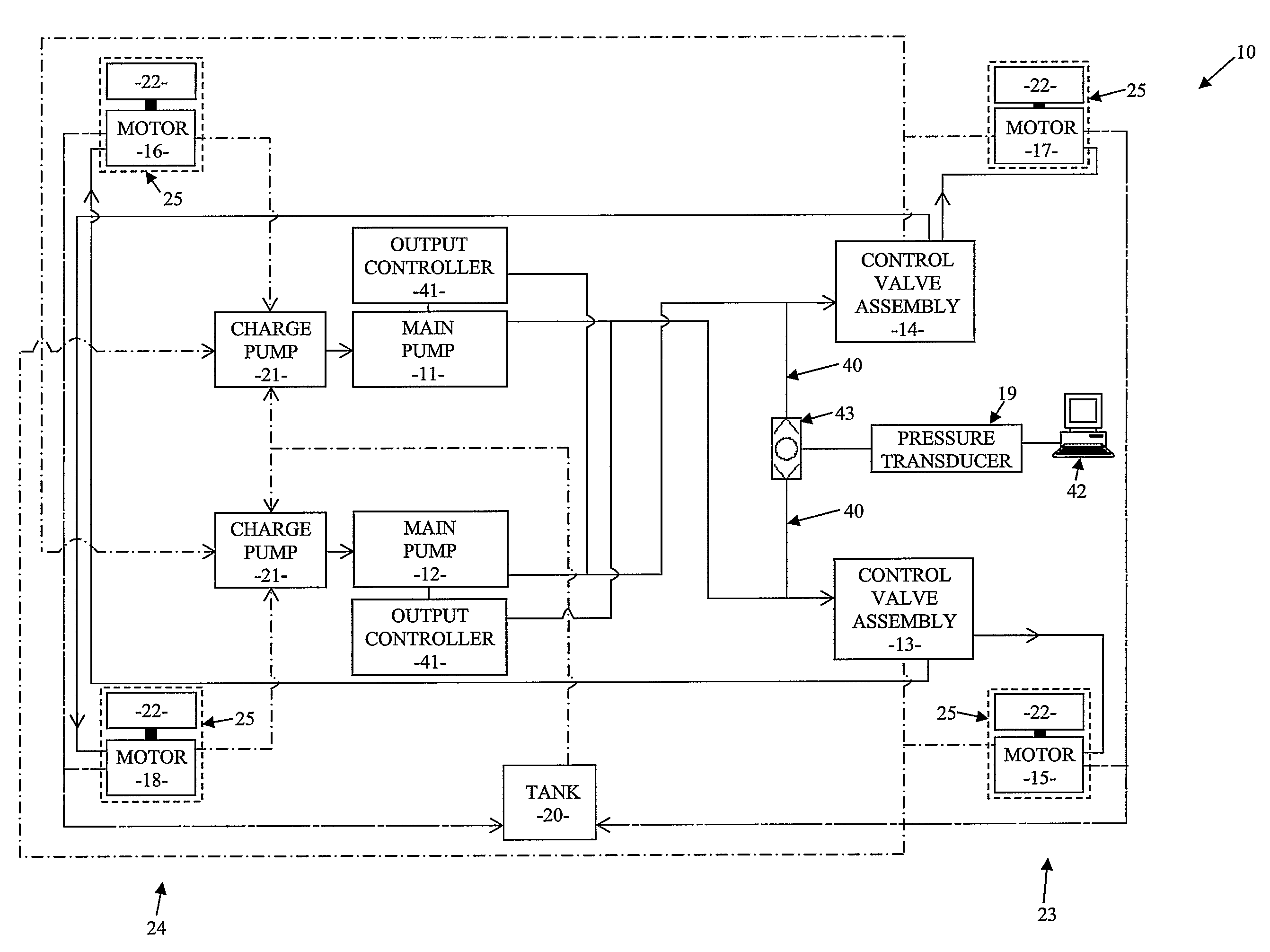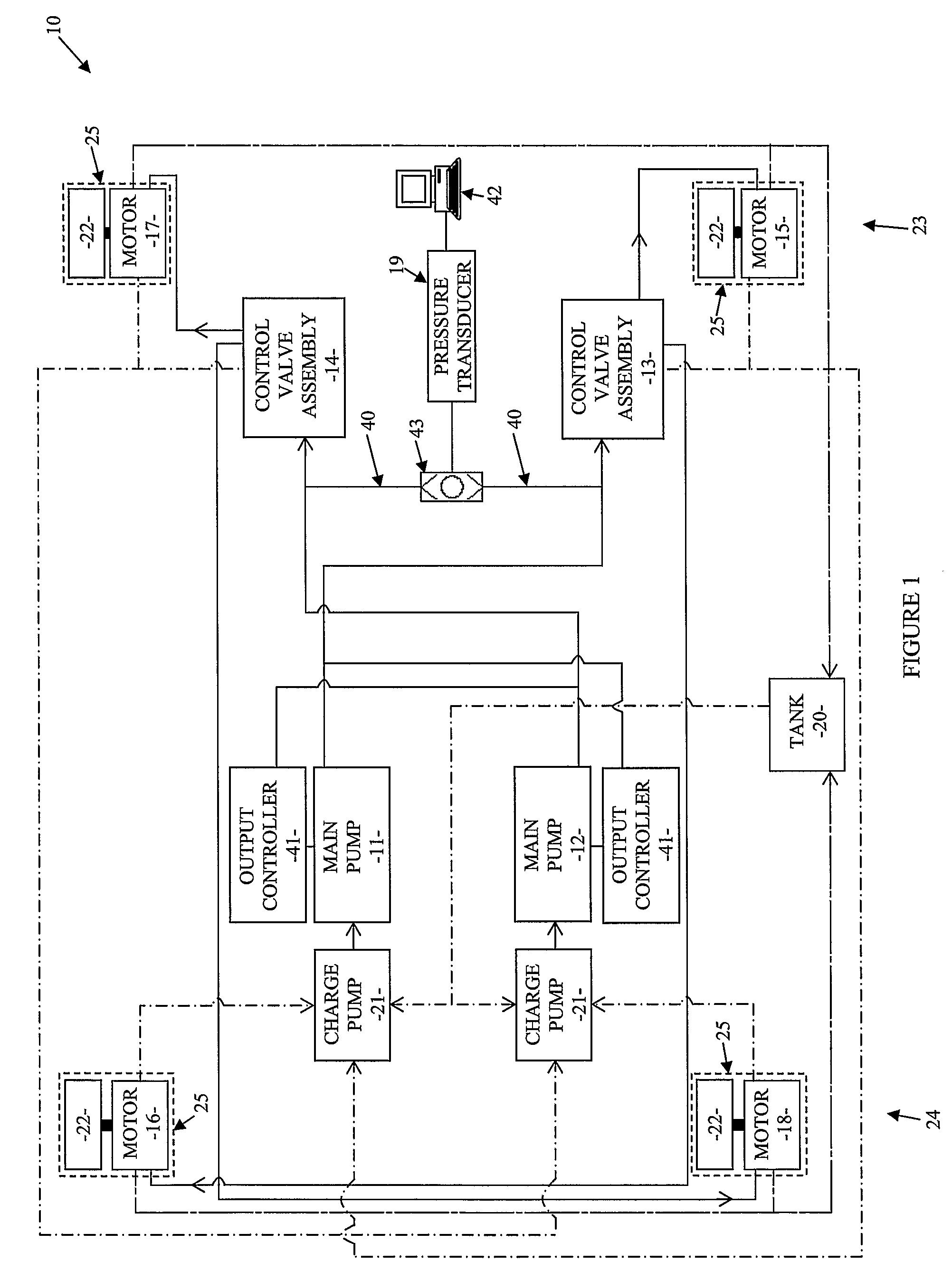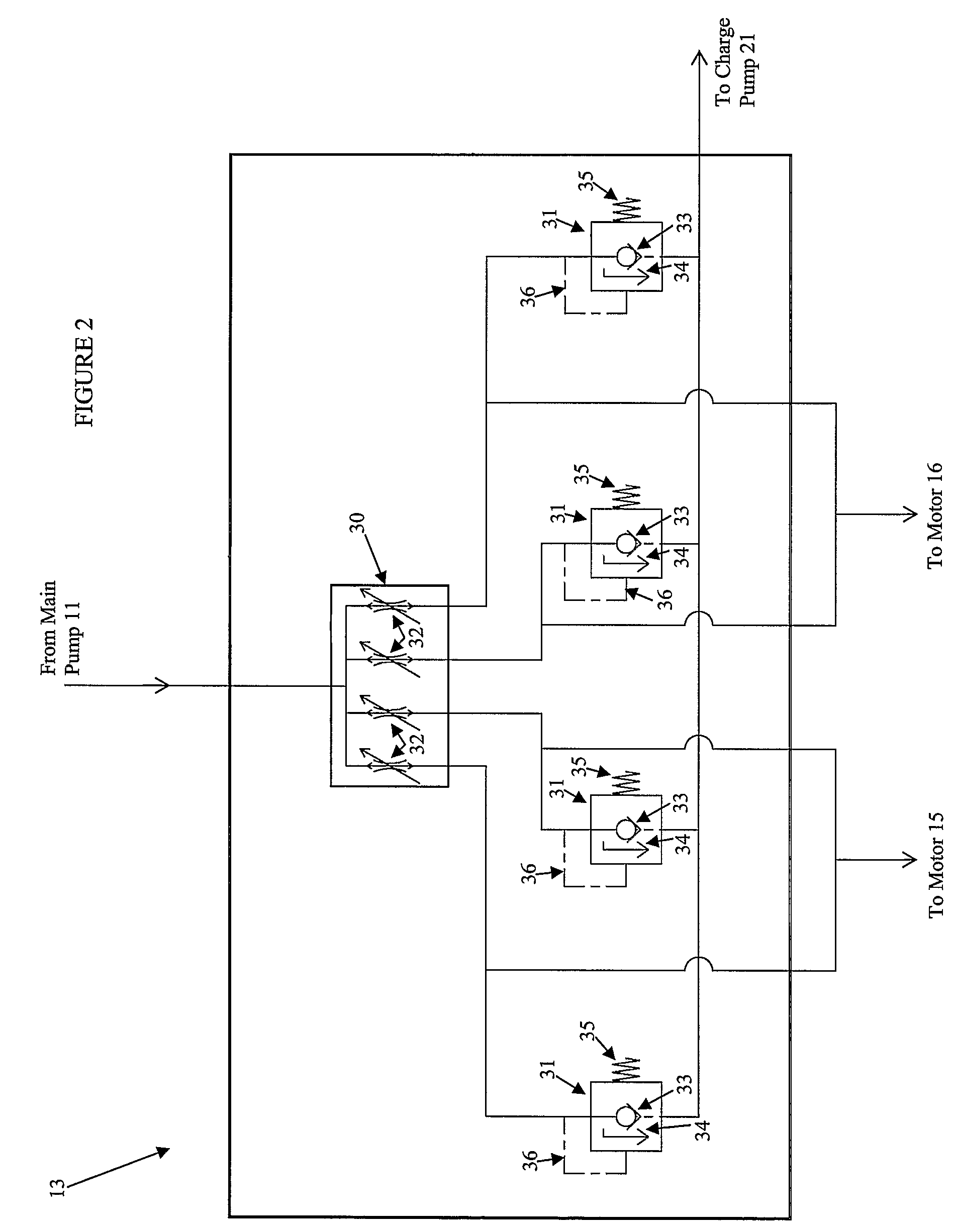Drive apparatus
a technology of hydraulic drive and drive body, which is applied in the direction of gearing, fluid couplings, tractors, etc., can solve the problems of affecting the ability of the vehicle to complete the turn, and reducing the hydraulic load presented to the hydraulic pump by the motor driving the drive member which has lost traction
- Summary
- Abstract
- Description
- Claims
- Application Information
AI Technical Summary
Benefits of technology
Problems solved by technology
Method used
Image
Examples
Embodiment Construction
[0047]A drive apparatus 10 according to a preferred embodiment of the present invention is depicted in FIG. 1. Drive apparatus 10 is incorporated into an articulated vehicle (not shown) and is operable to drive or propel the vehicle along the ground.
[0048]Apparatus 10 comprises a first hydraulic main pump 11, a second hydraulic main pump 12, a first hydraulically-controlled hydraulic control valve assembly 13, a second hydraulically-controlled hydraulic control valve assembly 14, hydraulic motors 15, 16, 17, 18, a hydraulic fluid pressure transducer 19, and a hydraulic fluid storage tank 20.
[0049]Hydraulic pumps 11, 12 are identical parallel variable displacement hydraulic piston pumps which are adapted to output a variable flow of hydraulic fluid as required at variable pressure. An inlet of each pump 11, 12 is connected to an outlet of a respective hydraulic charge pump 21.
[0050]The hydraulic control valve assemblies 13, 14 are identical to each other, and each assembly 13, 14 inc...
PUM
 Login to View More
Login to View More Abstract
Description
Claims
Application Information
 Login to View More
Login to View More - R&D
- Intellectual Property
- Life Sciences
- Materials
- Tech Scout
- Unparalleled Data Quality
- Higher Quality Content
- 60% Fewer Hallucinations
Browse by: Latest US Patents, China's latest patents, Technical Efficacy Thesaurus, Application Domain, Technology Topic, Popular Technical Reports.
© 2025 PatSnap. All rights reserved.Legal|Privacy policy|Modern Slavery Act Transparency Statement|Sitemap|About US| Contact US: help@patsnap.com



